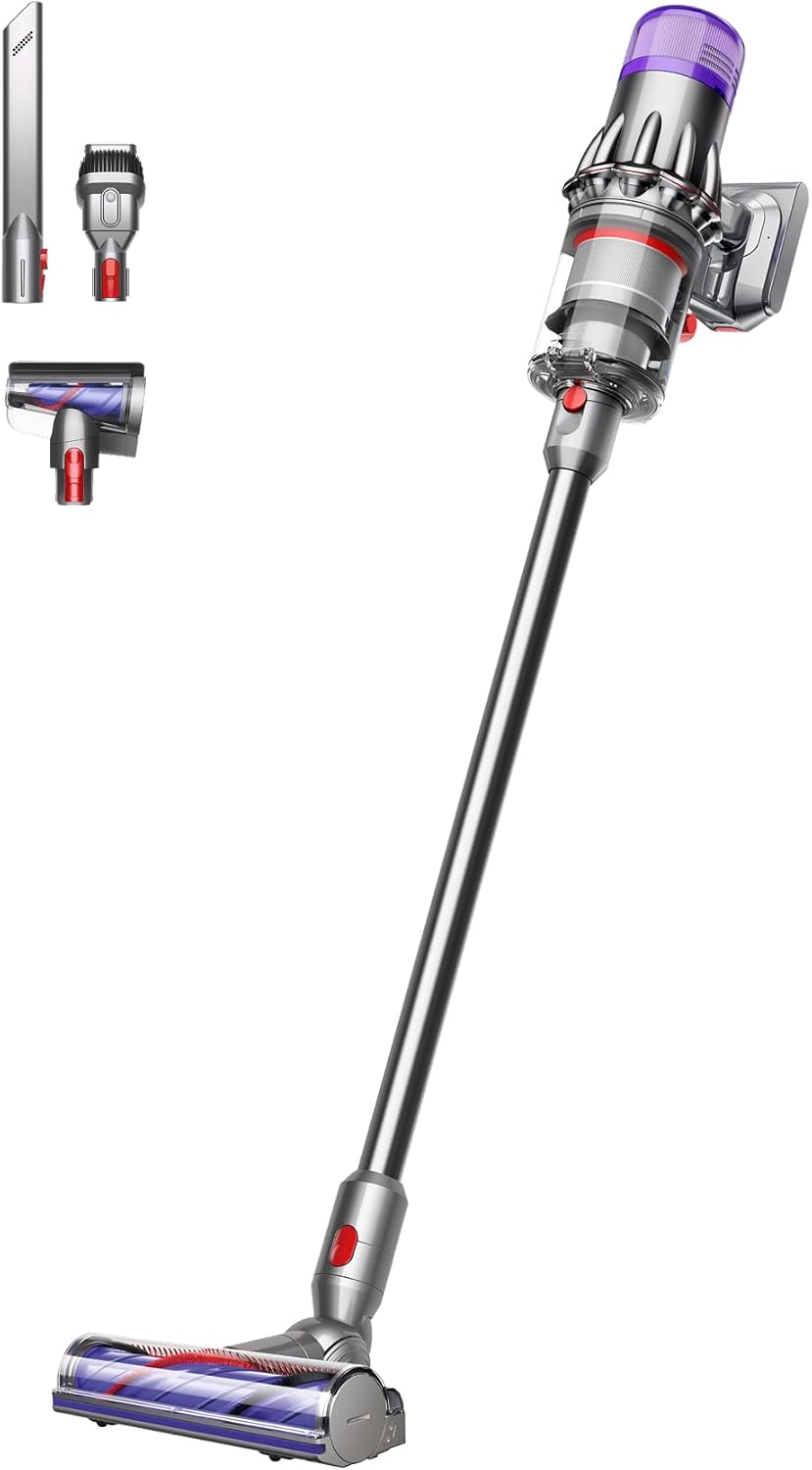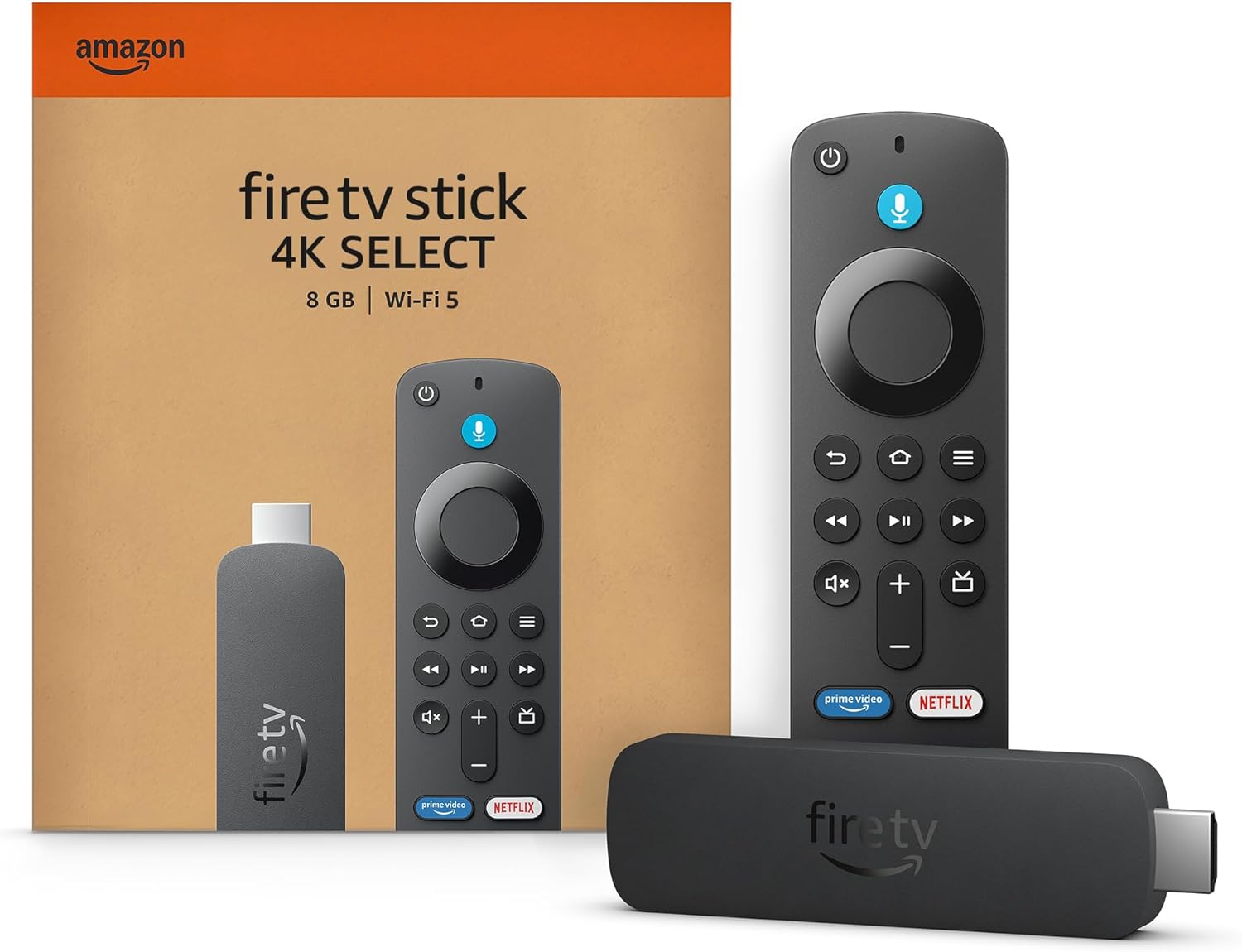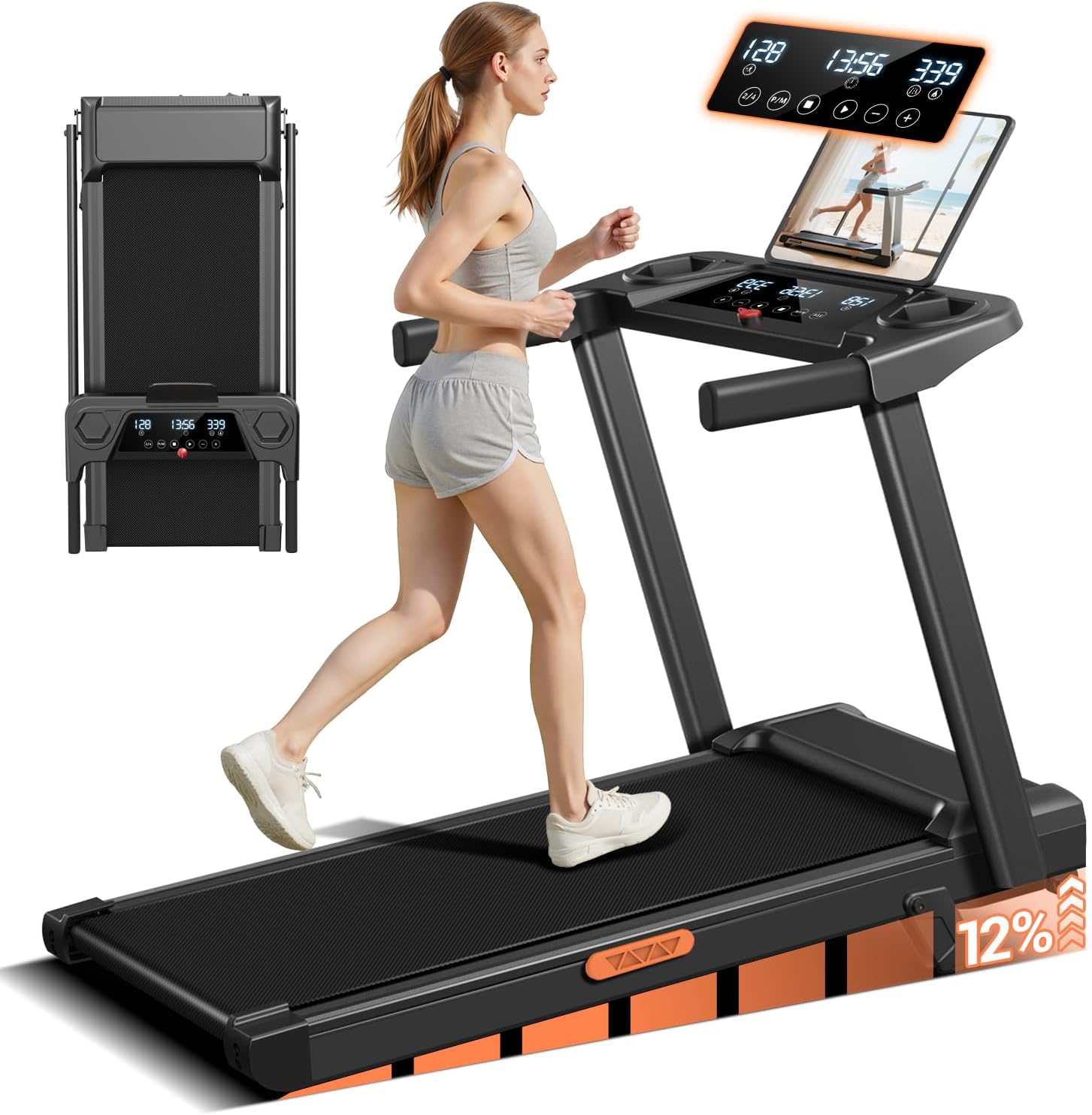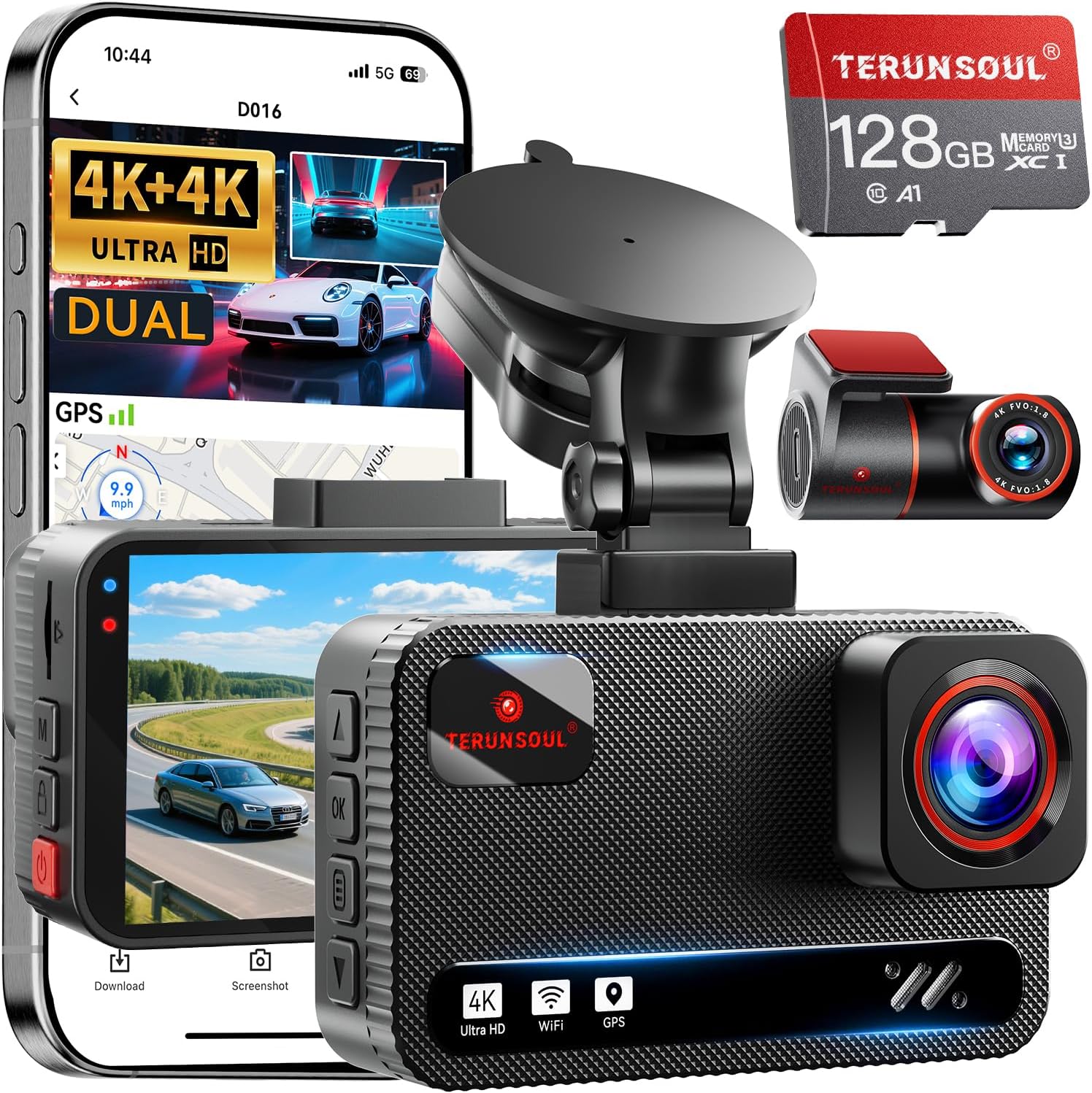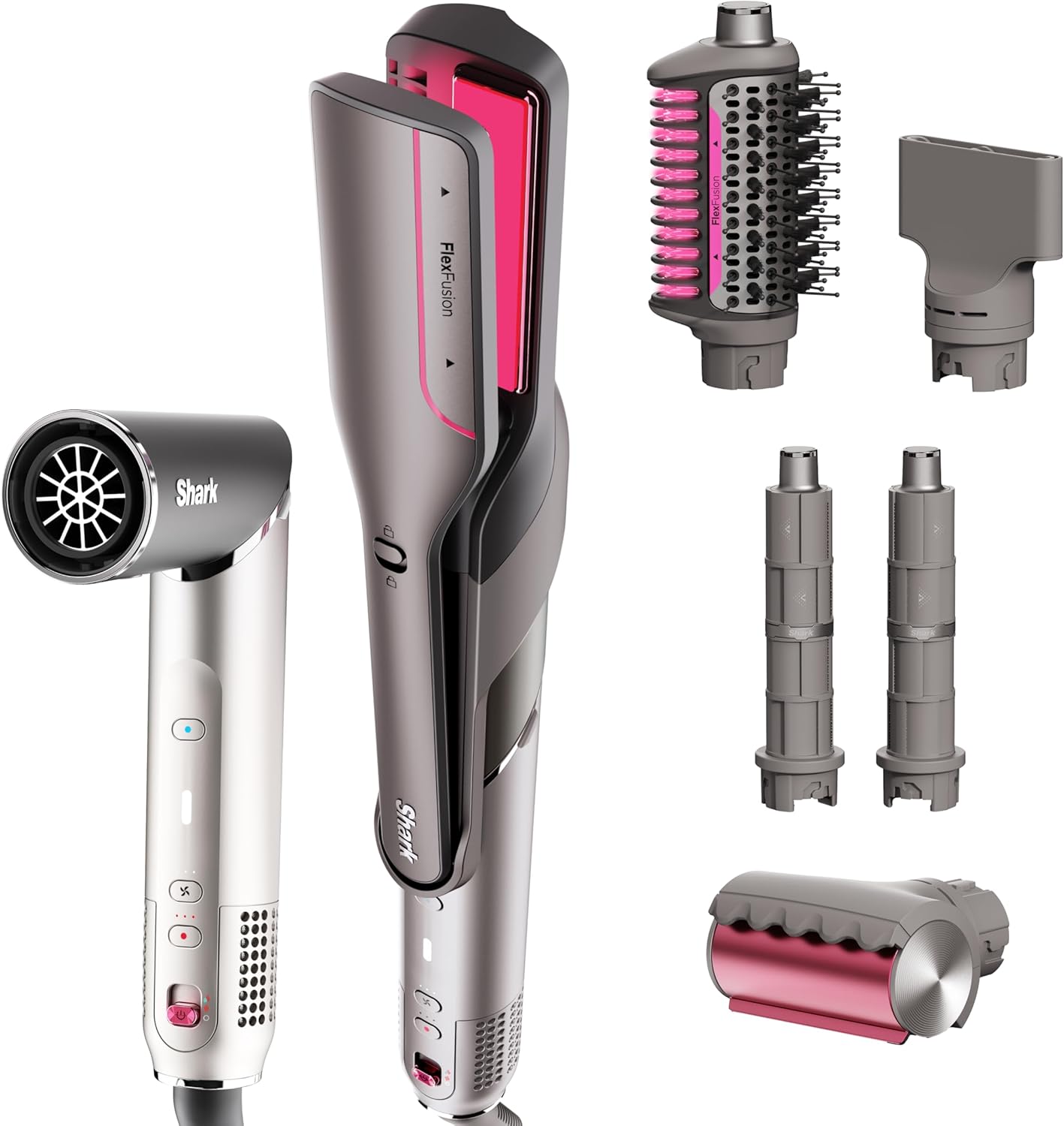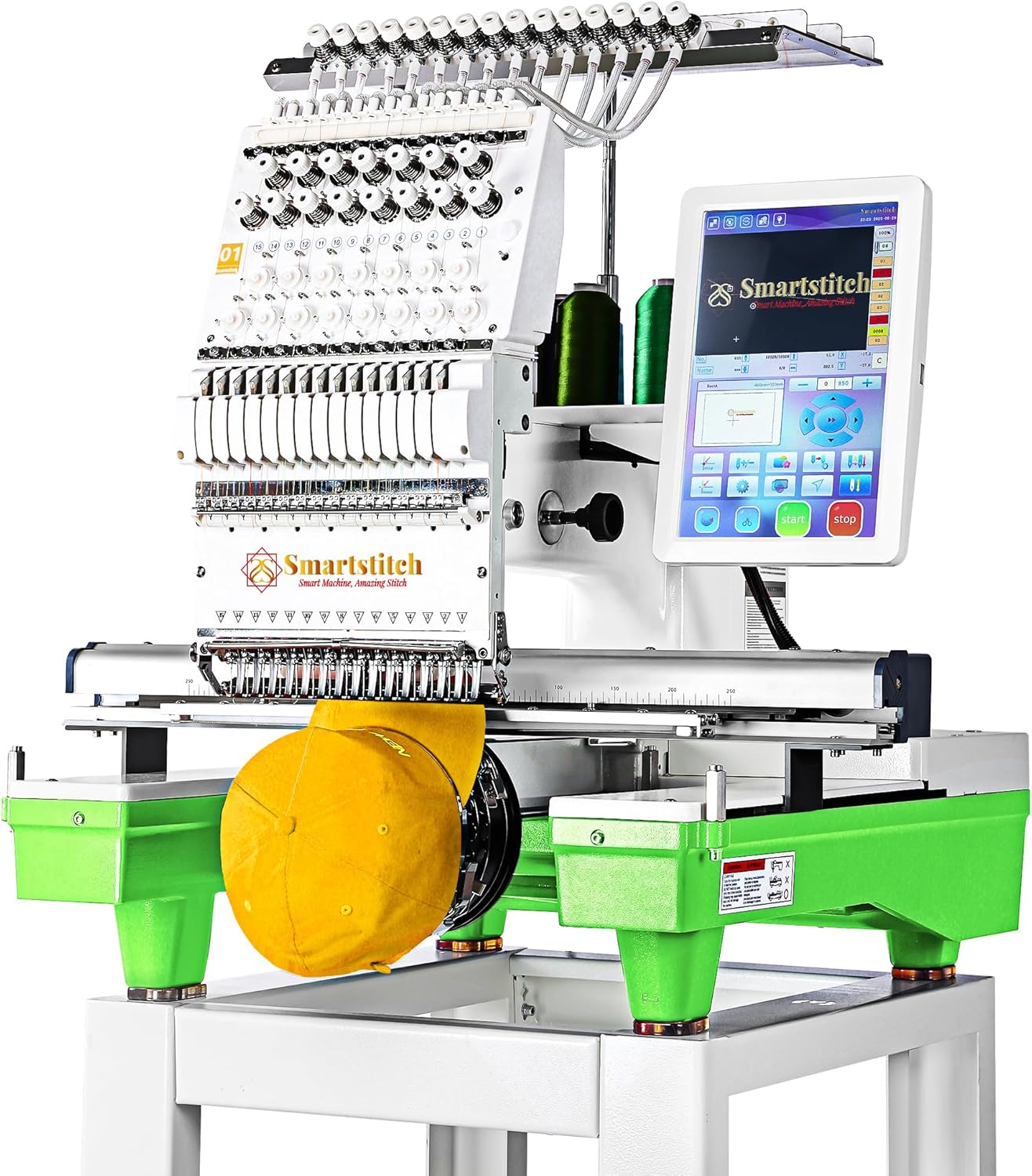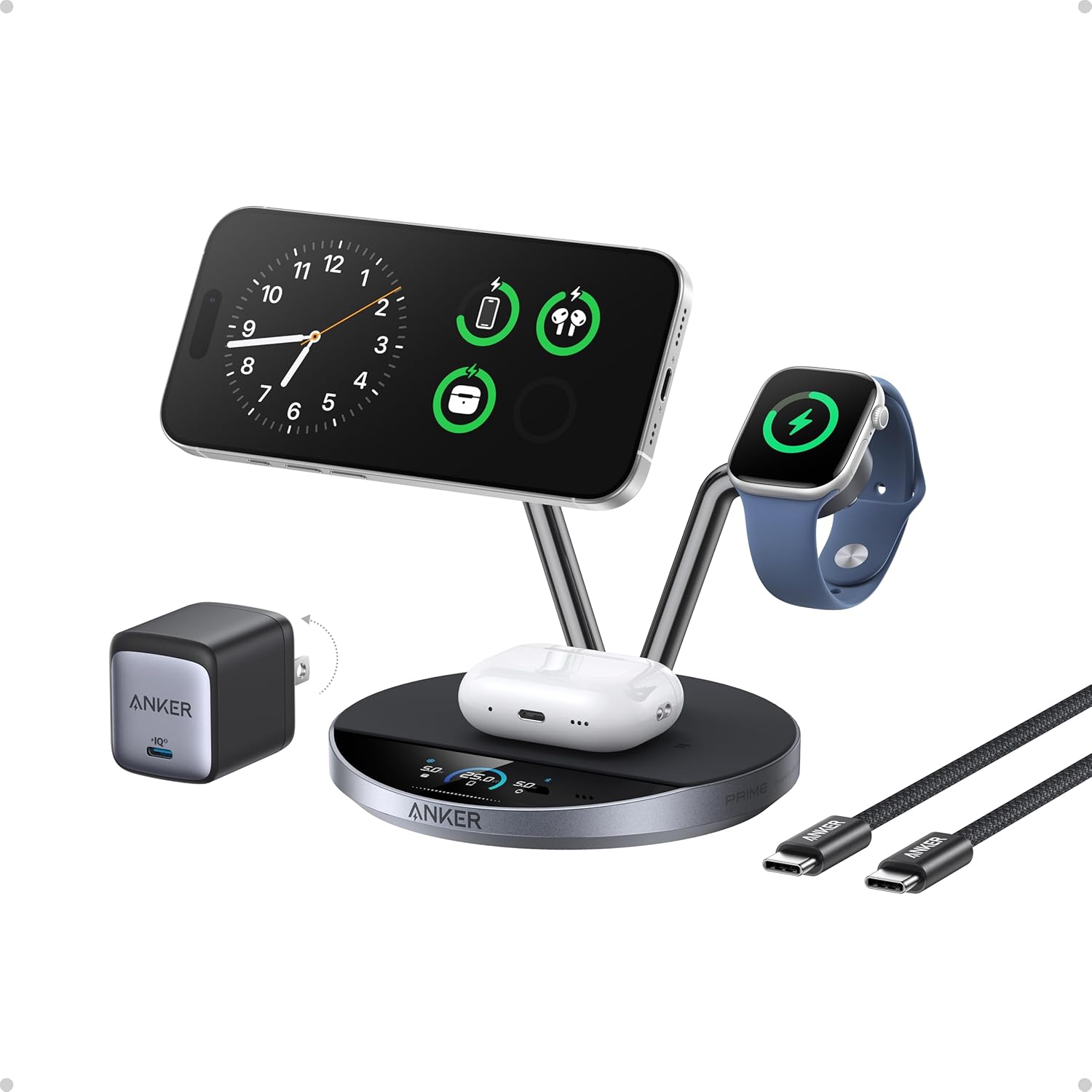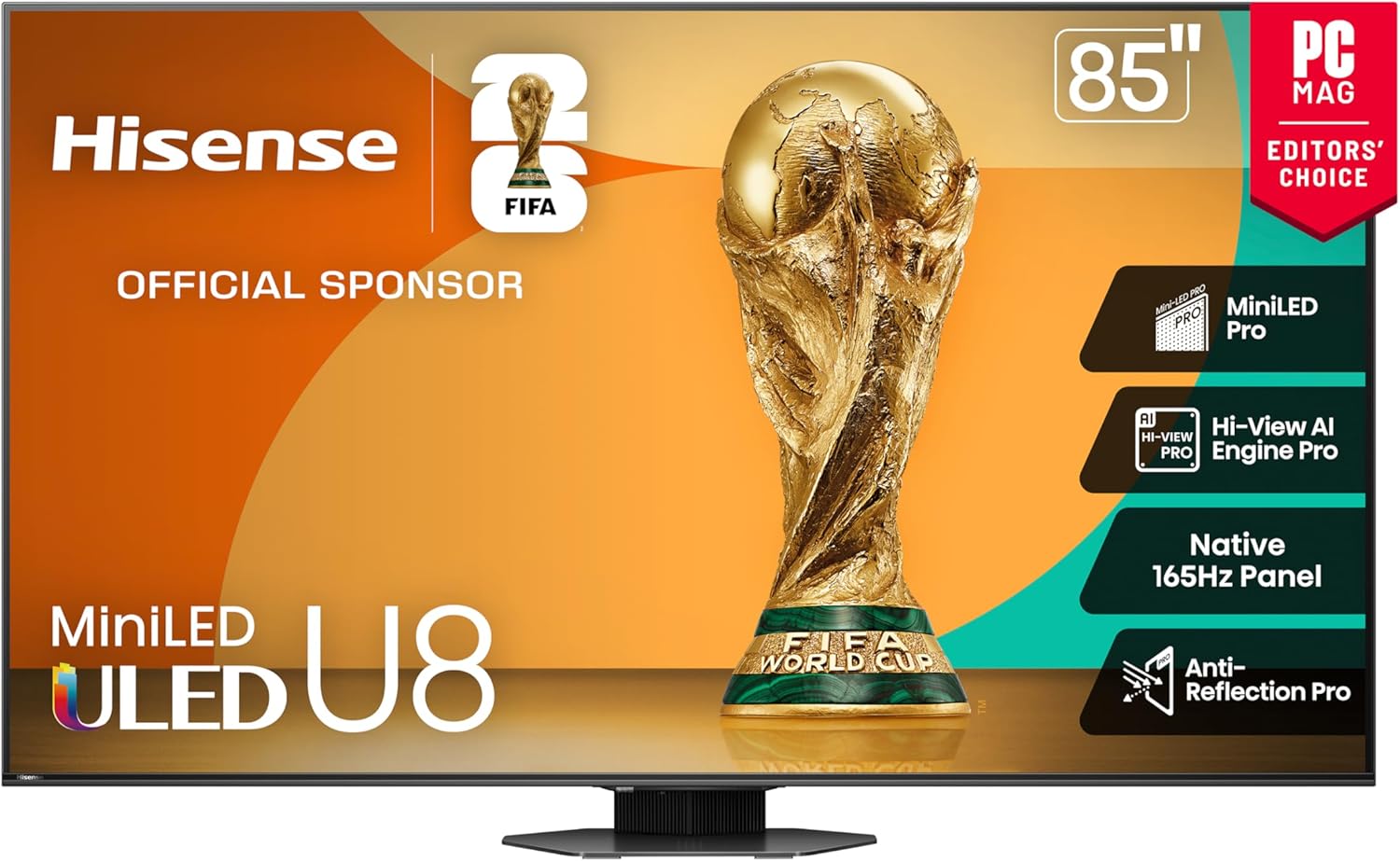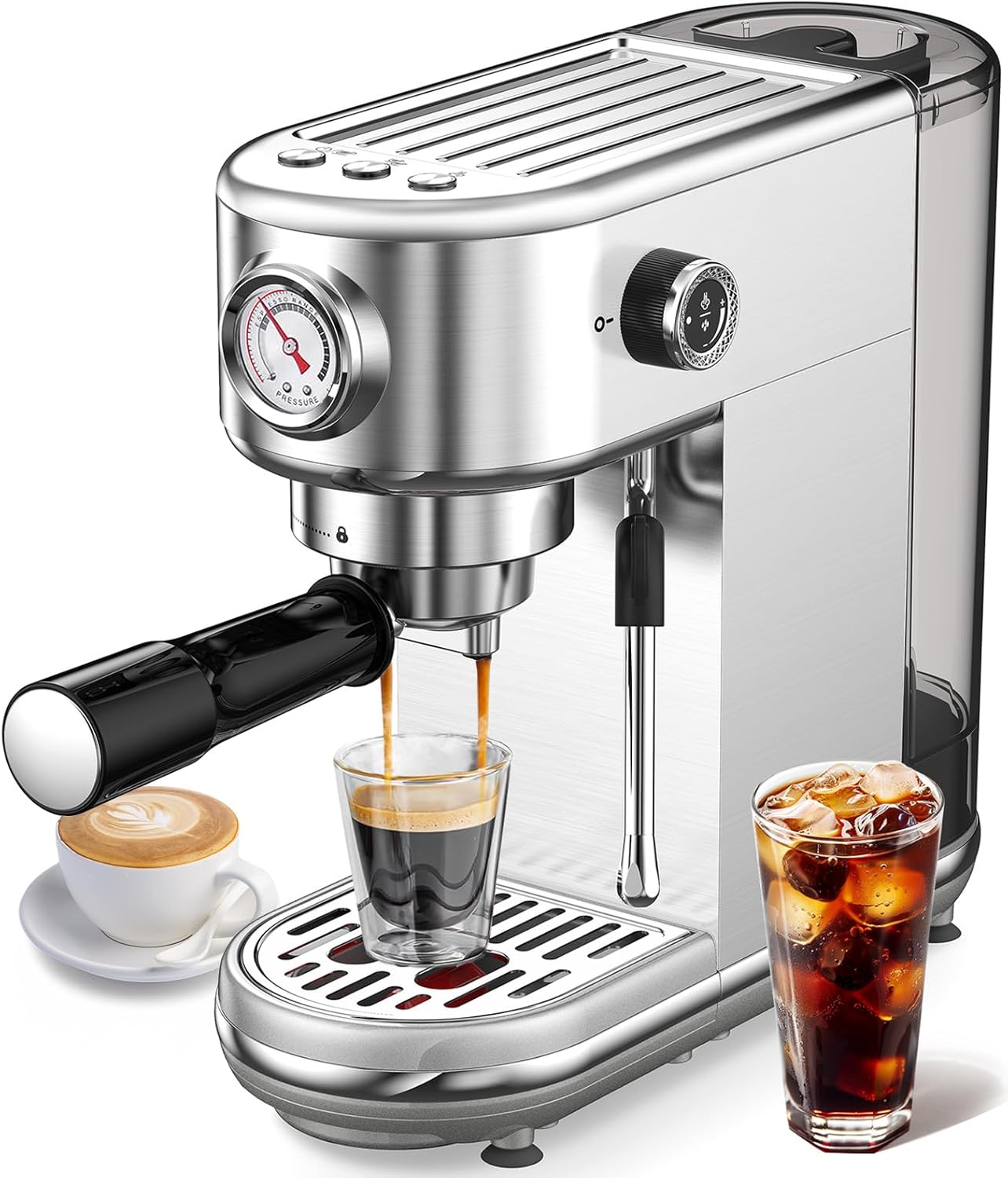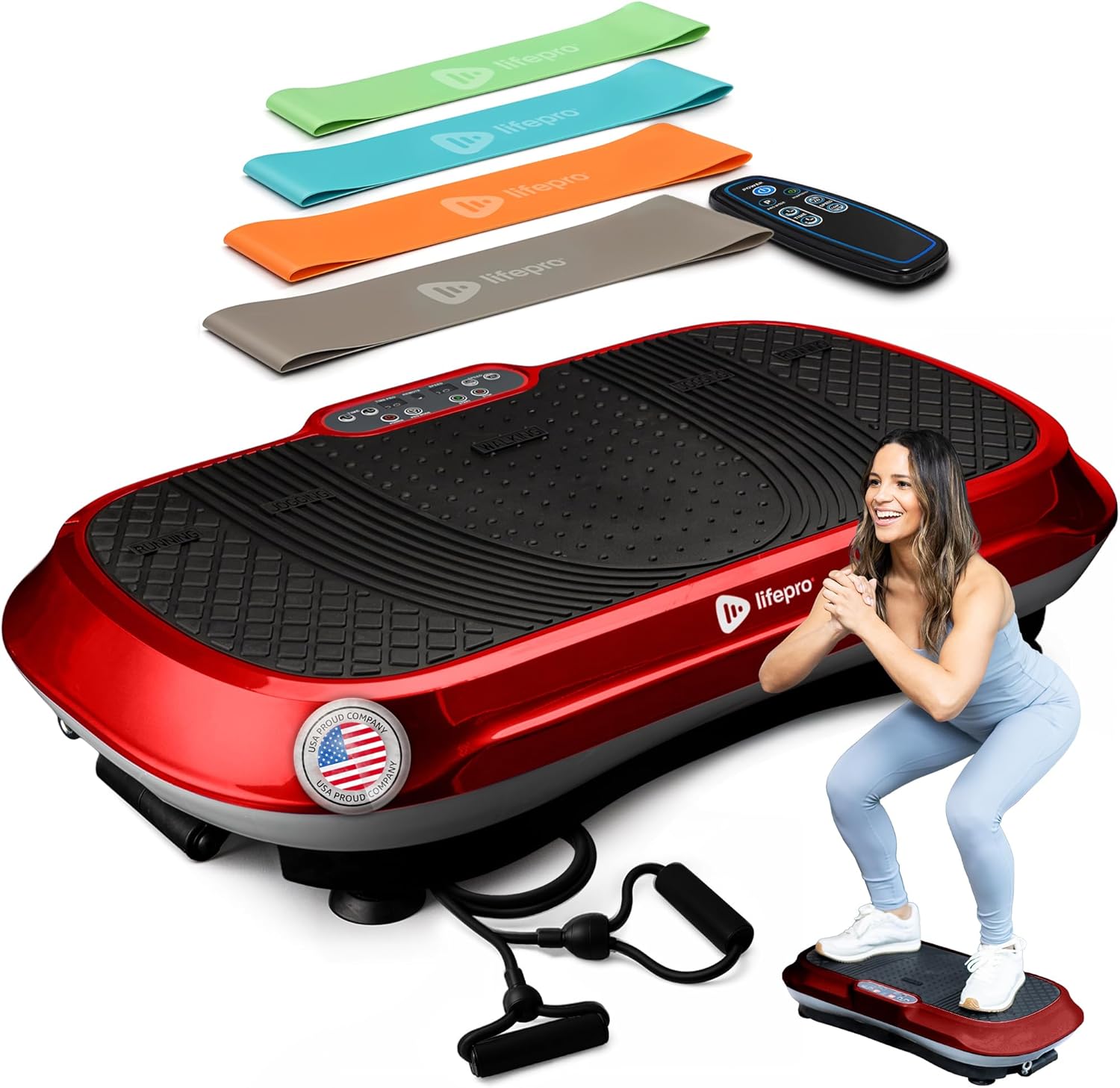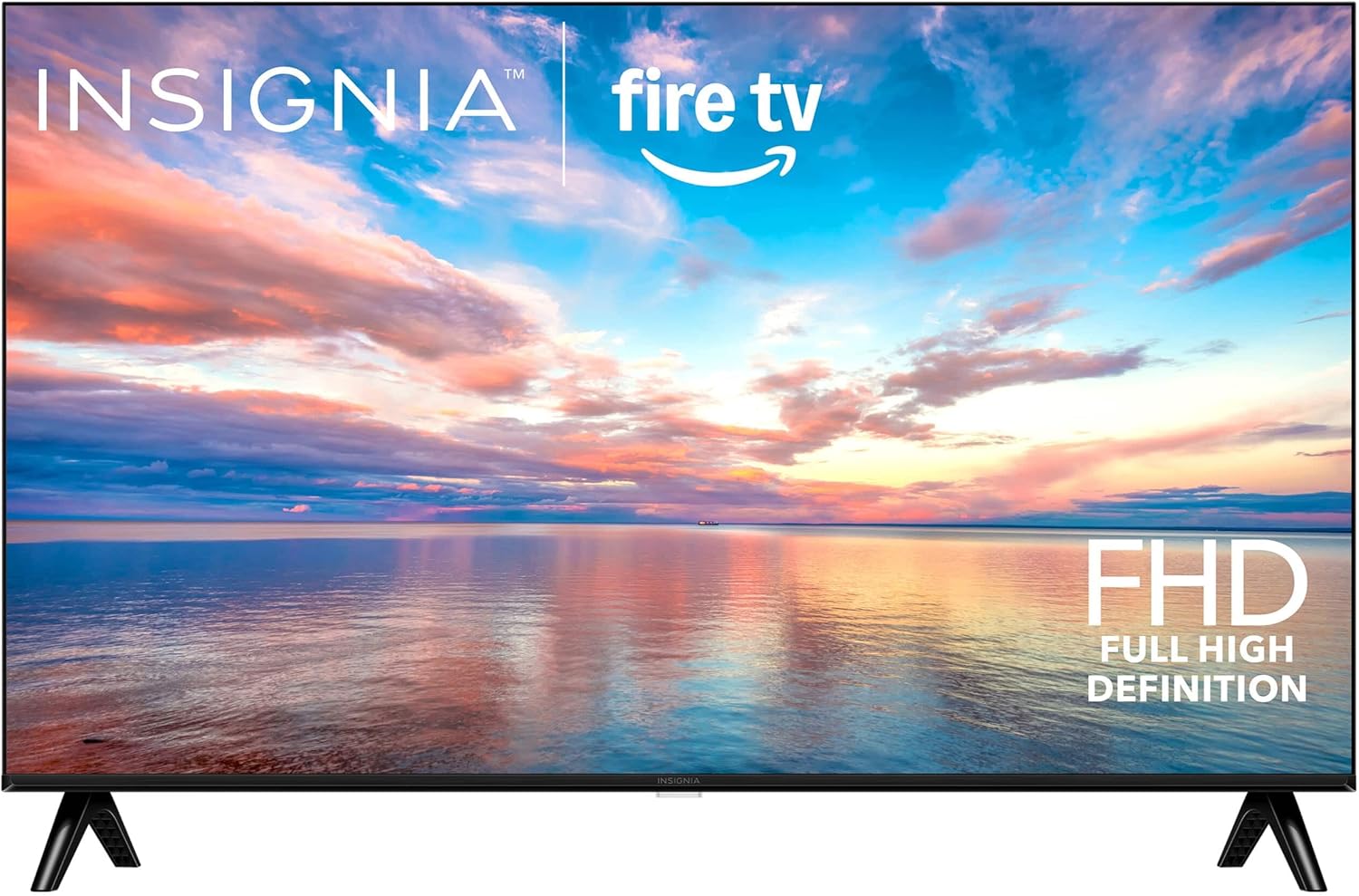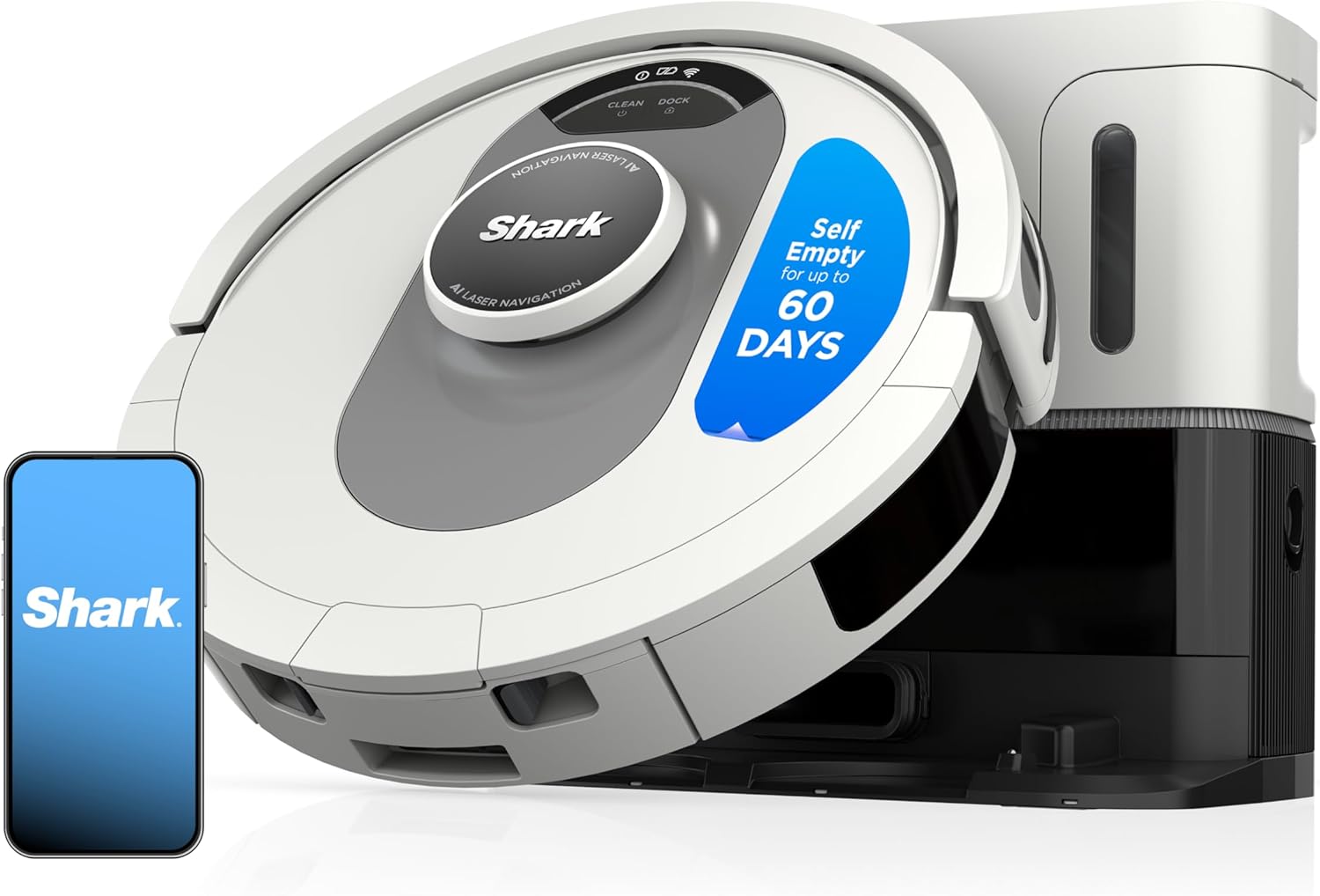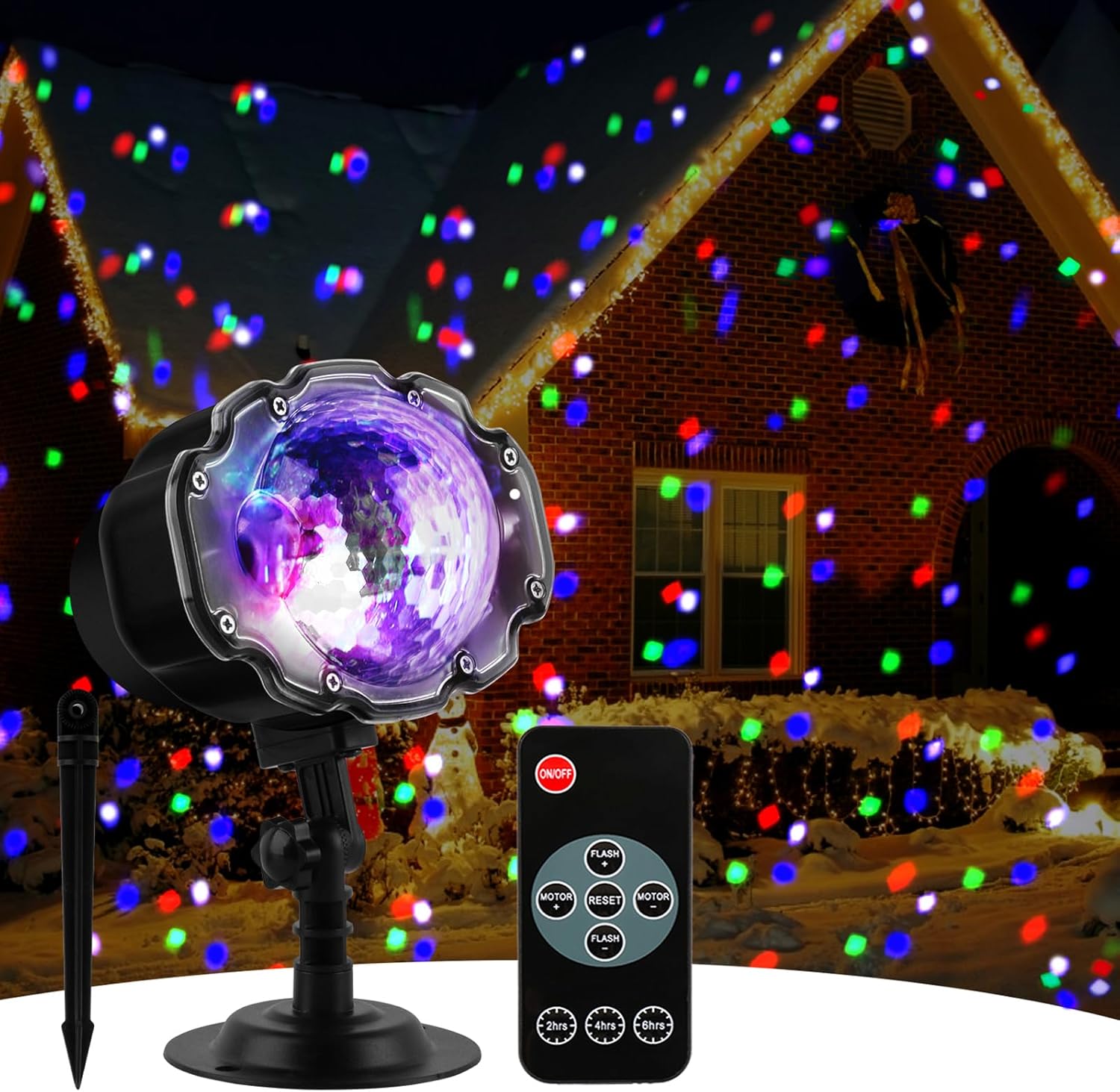Searching for the **best things to buy on Amazon** can feel like an endless scroll. But what if you could uncover truly life-changing products that solve real problems? We’ve done the digging for you, curating a list of genius **Amazon finds** and must-have gadgets that will instantly upgrade your daily life. Forget the guesswork and get ready to discover items you’ll wonder how you ever lived without. Let’s dive into the ultimate list of buys.
Best 41 Things To Buy On Amazon
1. Hisense 50″ 50E6QF Smart Fire TV
Backed by a standout feature set for movie nights and game days, the 50-inch Hisense 50E6QF Smart Fire TV comes with a QLED 4K panel and HDR support that wows. The AI 4K Upscaler and Dolby Vision preserve older content in sharp quality, while the addition of Dolby Atmos offers cinematic sound without any additional gear. Fire TV is integrated, so with one remote you have all of your streaming apps and Alexa voice control. Featuring Game Mode, Wi-Fi 6 and a handful of HDMI ports, it’s an easy all-in-one upgrade for nearly any room. All in all, it’s a solid choice that seems worth the money.
2. Ring Floodlight Cam Wired Plus
Ring’s Floodlight Cam Wired Plus turns a dark driveway or backyard into a fully monitored zone, with a 1080p HD camera and powerful motion-activated LED floods. Color night vision and customizable motion zones help you see exactly what matters, while Two-Way Talk lets you answer anyone from your phone. A built-in 105 dB siren adds serious deterrence when something looks off. If you want security, lighting, and a clean, pro-looking install in one device, this is a strong pick. Overall, it’s a well-rounded pick that feels worth the money.
3. LEVOIT Top Fill Humidifiers
The LEVOIT Top Fill Humidifier is a little device that quietly does wonders for your comfort, particularly in winter or AC-controlled rooms. Its 2.5-liter tank and up to 25 hours of run time reduce the need for refills, plus the easy top-fill design makes filling — and cleaning — a snap (with spill prevention). It’s not just quiet at 28 dB, it also has an automatic shut-off when it runs out of water. It’s a simple, set-and-forget means of ensuring that air never feels dry, tight or scratchy throughout the day. All told, it’s a well-rounded pick that seems to be worth the money.
4. Dyson V9 Motorbar Cordless Vacuum
Dyson’s V9 Motorbar cordless vacuum hits that sweet spot of power, and weight– at up to 40 minutes of fade-free suction in an ultra light body. The Motorbar cleaner head removes hair without tangling when the vacuum deep-cleans carpets and hard floors, so you can stop spending time cutting away hair from your brush. The LCD screen displays run time, machine performance information and maintenance alerts for convenience; whole-machine filtration emits cleaner air than the air you breathe. It’s great for quick, increasingly common whole-house cleans with no added elbow grease. It’s a solid pick overall, and one that feels worth the investment.
5. Ring Battery Doorbell
The Ring Battery Doorbell is for anyone who wants a smarter front door without the hassle of working with existing wiring or hiring an installer. It’s powered by a built-in rechargeable battery that you charge with USB-C, so you just pop it off, plug it in and click back. See visitors and packages from head to toe with full frame HD video, no squinting or stooping required; even see in the dark with night vision. Watch over your home 24/7 in crisp 1080p HD day and night: With Live View, you can check in on your home any time through the Ring app. It’s a small upgrade that provides a big boost in my security, awareness, and convenience. In all, it is a well balanced choice that I do feel worthy of the cost.
6. Keurig K-Supreme Single Serve K-Cup Pod Coffee Maker
The Keurig K-Supreme is your morning autopilot if you survive off coffee. MultiStream Technology extracts more flavor and aroma in every brew, unlike other single-serving cup brands which can hold coffee grounds or water for long periods of time before use. You have several brew sizes, plus a stronger setting and the ability to make hot over ice, as well as a 66-ounce dual-position reservoir that requires less filling and allows more flexibility in where the machine can be placed. It’s quick, intuitive and very easy — ideal for a daily coffee station for busy households or shared kitchens. All in all, this is an all-around winner and feels like you’re getting your money’s worth.
7. Amazon Fire TV Stick 4K Select
Amazon Fire TV Stick 4K Select Amazon’s Fire TV Stick 4K is an affordable, compact streaming stick with 4K HDR support, and if you want to experience the magic of smooth 4k HDR streaming for less, then this is the device to buy. With the new 1.7 GHz quad-core processor, apps open quickly, games run smoothly and you can switch between apps like Netflix and Amazon Video without any delay when navigating through this stunning home screen layout that puts all your favorite streaming services in one place. Support for HDR formats means that you’ll get an even higher image quality when watching TV shows and movies; Dolby Atmos audio turns your room into an entertainment venue. Use the Alexa Voice Remote to open apps, watch movies and shows or play music, follow the weather, or control your smart lamps. It also supports cloud gaming and can serve as an occasional console. All told, it’s a balanced choice that seems worth the money.
8. Blink Outdoor 4
Blink Outdoor 4 is sorta that “set it and forget it” security camera for people who don’t want to run wires all over the damn place or pay professional installers. It’s totally wire free: It is powered by AA lithium batteries, so it requires mounting only once and you get a complete peace of mind. You also have access to 1080p HD live view, nigh vision, motion alerts and two-way audio with the Blink app; use it inside or out homes. It’s an easy, inexpensive way to actually see what is going on around your home. And in general, it’s a well-rounded pick that feels worthwhile for what you’re paying.
9. Amazon Fire HD 10 tablet
Designed as a cheap tablet for watching entertainment content, the Amazon Fire HD 10 hits the mark. You receive a 10.1-inch Full HD display that is sharp enough for movies and bright enough for reading, as well as an octa-core processor and 3 gigabytes of RAM to help things scroll more smoothly and make app switching less stuttery. It’s perfect for Prime Video, Kindle books, social media, browsing and simple games. It has an all-day battery life and comes with Alexa hands-free; it’s a solid everyday adult or kids tablet. All in all, it’s a real good pick that seem worth the cash.
10. JBL Tune 720BT – Wireless Over-Ear Headphones
JBL’s Tune 720BT over-ear headphones are really for anyone wanting that classic JBL Pure Bass Sound without paying flagship dollars, and with no wires attached. Bluetooth 5.3 maintains the connection, and that insanely long battery life — up to something like 76 hours — allows you to go days before needing a charge. Its li ghtweight, collapsible design makes it easy to store them when not in use, and you can even clip it to your bag thanks to the detachable cable system and a folding hinge for conforma ble packing. They’re a great every day pair for commuting, studying, working or staying up late to watch shows without disturbing room mates or family. On the whole, it’s a well-rounded pick that receives solid bang for its buck.
11. Amazon Fire TV 40″ 2-Series
Amazon Fire TV 40″ 2-Series simplifies streaming with a brilliantly simple smart TV that gives you access to all your favorite subscriptions and over 500,000 movies and TV episodes. Great for bedrooms and dorm rooms, too, when you’re tired of watching Netflix on your phone or laptop but don’t feel like shelling out for another box. HDR10 and HLG add extra life to movies and sports with vivid, rich color, plus easily watch your free local TV with the included Dolby Digital sound bar delivering clear dialogue without having to attach a sound bar. As a cheap, working second TV, this one makes a lot of sense. It is a good all-around pick, and it feels worth the money.
12. JBL Tune 520BT – Wireless On-Ear Headphones
JBL Tune 520BT on-ear headphones are a flat-folding, lightweight and compact solution for everyday use. They provide up to about 57 hours of playtime with speed charge for an instant recharge, which is a game-changer if you have a habit of forgetting to power up the devices. Low weight yet durable construction and foldable design makes it easy to take the headphones with you on the go The aesthetic, high quality buckle is precisely shaped for high wearing comfort over long periods of time. They’re great general-purpose wireless headphones for on-the-go with, onboard controls, Bluetooth 5.3, and Voice Aware for better-sounding calls. All in all, it’s a solid choice that genuinely seems worth the money.
13. AI Hand Warmers Rechargeable 2 Pack
These AI Hand Warmers, a small gadget you’ll want with you all winter long. Two magnetic pieces snap together to form one heater, or break apart so you can warm both of your hands at the same time. Powered by intelligent chip to manage the battery and temperature levels for up to 20 hours safe warmth. They’re small enough to fit in a pocket, are rechargeable over USB and are ideal for commutes, stadium seats, camping trips or dog walks — just those times your fingers seem to be the first things that get cold. On the whole it’s a solid backside pick that I feel good calling worth the money.
14. INSIGNIA 50″ Class F50 Series Smart Fire TV
The INSIGNIA 50″ F50 Series QLED Fire TV offers big-screen value, also boasts impressively good picture quality. Its 4K QLED panel with quantum dot color and Dolby Vision HDR provide rich contrast and punchy colors that are a level higher than what the price suggests. You get streaming apps, live TV options and Alexa voice control already baked in with built-in Fire TV. On a budget for a main living-room TV, it’s a seriously strong contender that still feels current. All things considered, it’s a solid choice and feels like good value for the money.
15. Ninja BL660 Professional Compact Smoothie & Food Processing Blender
That do-everything workhorse you can actually keep out on the counter? It’s the Ninja BL660. The large 72-ounce blending jar is perfect for making drinks or smoothies for the entire family, whether everyone likes something different or you’re just really thirsty. When you’re on the go, two 16-ounce to-go cups make single-serving shakes and just snap directly right into travel cup. Offering three speeds and pulse control, along with dishwasher safe parts, it is a powerful option for smoothies, sauces, frozen drinks or everyday meal prep. All in all, well-rounded pick that feels worth the money to me.
16. 1500W Electric Heaters Indoor Portable with Thermostat
The 1500W Electric Space Heater is a small ceramic heater that is perfect for warming up small rooms quickly with even, heat distribution using energy-efficient modalities of power blowing out from a PTC element and fan. You can dial in the perfect comfort level thanks to an adjustable thermostat and two heat settings. Peace of mind for bedroom and office use with tip-over protection and overheat shutoff. Lightweight and portable, it’s a budget-friendly way to take the chill off without cranking up the central heating for hours on end. All in all, it’s a solid selection that seems to justify the price.
17. Samsonite Omni 2 Hardside Expandable Luggage with Spinner Wheels
Samsonite Omni 2 Hardside Expandable Luggage is for travelers who are looking for durability without the drama at the airport. Its scratch-resistant polycarb shell withstands rough handling, while smooth spinner wheels keep you moving effortlessly through long terminals and bustling city streets. An expandable main compartment provides you with extra packing room, while interior dividers prevent clothes from falling over into a messy heap. With a TSA-friendly lock, reinforced corners, it’s the suitcase for frequent flyers and family vacations. Over all, it’s a jack-of-all-trades pick that feels like it should be more expensive.
18. Cordless Vacuum Cleaner
The KARDV Cordless Vacuum Cleaner is serious suction, lightweight design. A 500W motor serves as the engine for powerful suction which provides up to 40kPa of power, meaning deep carpet cleaning on carpets, area rugs, and even bare floors. Its antimatte brush head, 1.5-liter dust cup is perfect for pet hair and larger cleanups, while up to one hour of battery life should be sufficient cleaning time for most homes on a single charge. It’s perfect for tight, dark spaces and under furniture; with LED headlights and a flexible wand. It’s a well balanced pick overall, and one that I feel is deserved of the price tag.
19. Bose QuietComfort Ultra Bluetooth Headphones
Bose QuietComfort Ultra Bluetooth Headphones are high-end noise-canceling cans designed for those who want to have an accurate and deep experience. Bose Immersive Audio and CustomTune tech customize the sound to your ears, while multiple modes — Quiet, Aware and Immersion — adjust for city streets, travel, gaming or focused work. Listen all day: Enjoy up to 30 hours of playback time for all-day listening and use the E; 7 over-ear headphones wherever, whenever you like thanks to a compact, foldable design. They’re great for the commuter, studio-style listening, fights and home offices. It’s a fairly well-rounded pick that feels worth the price.
20. BISSELL Little Green Max Pet SmartMix Portable Carpet and Upholstery Deep Cleaner
The BISSELL Little Green Max Pet SmartMix is the type of cleaner that keeps carpets, couches and your sanity if you live with pets or messy kids. It’s a portable deep cleaner that sprays, scrubs then removes stains and spills with special tools & detergents using water pressure to spray and suction to scrub and finally extract the stains. A self-cleaning hose keeps things fresh, and specialized tools tackle pet hair, car interiors and stubborn spots. Lightweight and portable to bring up flights of stairs or to a vehicle, it is ideal for rapid disasters. All told, it’s a well-rounded pick that feels worthwhile for the money.
21. SANSUI 34-Inch Curved Gaming Monitor
SANSUI 34 inch Curved Gaming Monitor surrounds you like a tactical blanker, and enables race rallies to appear in front of your eyes with shocking clarity in the ultra-wide 1500R screen UWQHD3440 x 1440 resolution rendering you smooth;are expediting when gaming;.isDebugEnabled. FreeSync is also included to help reduce screen tearing, which, combined with a 165Hz refresh rate and 1ms response time, keeps the action smooth and snappy. And those colors, bold for movies as well as content creation, cover 125 percent of the sRGB spectrum while featuring HDR support and 300-nit brightness. It’s flexible for PCs and consoles, thanks to multiple HDMI and DisplayPort inputs. Overall, it is a well-built choice that seems worth the spend.
22. JBL Tune 510BT – Bluetooth headphones
JBL’s Tune 510BT headphones are for those who want wireless sound that simply works every day, without needing to mess with settings. JBL Pure Bass Sound means booming lows for playlists, podcasts, and TV sound, while Bluetooth 5.0 ensures your favorite devices maintain a strong and stable connection. When the battery is introduced to a flash step you get up to 40 hours of battery life, and it will last for several weeks in quick charge mode. They also pack a lightweight, foldable on-ear design that’s easy to stow in your bag, with built-in buttons for calls and tracks. All in all, a solid pick that feels like it’s worth the money.
23. roborock Q7 M5+ Robot Vacuum and Mop
The roborock Q7 M5+ is a robot vacuum and mop combo that’s designed to handle floor cleaning so you don’t have to. A 10,000Pa suction picks up carpet debris, crumbs and pet hair while the mopping system takes care of everyday spills and dust in one go. Its dock for self-emptying is capable of containing weeks’ worth of dirt, so you’re not constantly dumping out the bin or touching mess. PreciSense LiDAR scans your home in high resolution, enabling you to set no-go zones, room-by-room cleaning schedules and detailed do-not-disturb preferences all via the app. Over all, it’s a solid pick that feels worth the money.
24. LEVOIT Humidifiers
OasisMist Humidifier by LEVOIT is a smart warm-and-cool mist machine with the goal of helping dry rooms become comfortable quickly, no matter if it’s winter or AC season. The top-fill 4.5-liter tank is a cinch to refill without making a mess, and the unit can swiftly increase humidity in medium- to large-size rooms, such as bedrooms, nurseries or offices. Auto mode relies on sensors to keep your desired humidity level automatically, and app/voice control provide you custom management modes for convenience. It doubles as an essential-oil diffuser, and it’s whisper-quiet for light sleepers. It’s an all-around pick that seems worth the money.
25. DEWALT 20V MAX Cordless Drill
of torque to complete a wide range of fastening applications and the DCD780 compact drill/driver (0-600/0-2,000 RPM) provides power and speed control for precise drilling and driving DEWALT’s new 20-Volt MAX power tools are designed to surpass professionals expectations and address the need for tools that have the power to withstand rigorous jobsite applications, while also providing comfort and ease of use. What you do get is a compact 1/2-inch drill/driver with two speed settings for drilling and fastening, as well as a 1/4-inch impact driver that offers powerful torque for larger screws and lag bolts. Complete with two 20V lithium-ion batteries, charger and soft bag – everything is there to keep it portable. It’s a good option for everything from furniture work to deck building and home remodeling. But all in all, it’s a solid choice that feels like a good value.
26. WOLFBOX 4000A Jump Starter
The WOLFBOX 4000A Jump Starter is a four-in-one on-the-road hero – high-amp jump starter, inflator (160 PSI) power bank and emergency light in one compact design. Its 24000mAh capacity and 4000A peak current let you start large gas and diesel engines, then charge your phone or laptop using 65W turbo charging. The bright LED display and preset tire pressures makes inflating easy and accurate. It’s the gizmo you wish had been in your trunk the last time you hit the road, went camping or faced winter with a car. All in all, it’s a solid pick and one that feels worth the money.
27. Shark Rocket Ultra-Light Corded Bagless Vacuum
Designed for those who are looking for the ideal combination of suction strength and corded convenience, the Shark Rocket Ultra-Light Corded Bagless Vacuum offers cleaning as powerful as a full-size upright vacuum with 2x the capacity. It weighs about seven pounds; it’s simple to carry upstairs, and its thin profile gets under furniture and into tight corners. It turns into a handheld for sofas, stairs, cars and ceiling cobwebs, with swivel steering so it’s agile in confined spaces. It’s a solid choice all around that seems worth the money.
28. OhGeni Queen Air Mattress
The OhGeni Queen Air Mattress is a guest bed that feels like a real bed, not a flimsy pool float that loses its air overnight. Its high, 18-inch profile and Air Coil system distribute weight more evenly so sleepers don’t end up rolling toward the mid-line or sagging at the sides. An integrated 110V pump inflates and deflates the mattress with just a twist of a knob and in less than 5 minutes, so turning any room into a luxurious guest room is a breeze. Thanks to durable materials, a cushiony top layer and an included carry bag, it’s perfect for guests, camping or just those temporarily moves. All up, an all-round selection which feels like good value for money.
29. Bose Ultra Open Earbuds
Bose Ultra Open Earbuds are a new twist on earbuds for earbud haters and listeners who want to be aware of their surroundings. The cuff-style design clips to your ear and employs Bose OpenAudio for rich, immersive sound while allowing you to remain aware of traffic, conversations and announcements in the world around you. They’re perfect for running, walking, working out or commuting when safety is a concern. And with up to 48 hours of total playtime and an ability to get a full six hours in just five minutes, they’re designed for long days. So, all in all, it’s a solid pick that feels like you’re getting your money’s worth.
30. Graco 4Ever DLX 4-in-1 Car Seat
The Graco 4Ever DLX 4-in-1 Car Seat grows with your child, from 4 – 120 lb. It grows from rear-facing harness (4-50 lb) to forward-facing harness (22-65 lb), to highback belt-positioning booster (40-100 lb), to a backless belt-positioning booster, and features the Simply Safe Adjust™ Harness System, which allows you to adjust the height of the harness and headrest. Graco ProtectPlus Engineered delivers the crash protection you desire for your child, while Simply Safe Adjust harness headrest lets you adjust the headrest and harness in one motion, with no rethreading needed. And, machine-washable covers and cup holders help make cleanup easy. For long term value and safety, it’s been tough to beat. By and large, it’s a well-rounded pick that feels like good value for your money.
31. 12% Incline Treadmill with Handle
The 12% Incline Treadmill with Handle is designed for anyone who wants genuine cardio in a compact home footprint. 3.0HP noise-free motor, 12% inclination and 3-in-1 multi-function allows you to use it as a under-desk walking pad, normal treadmill or the sports jogger with security handrail. An easy-to-read LED display keeps track of your speed, time, distance and calories. With a 300-pound capacity and a folding frame, it’s made to fit in apartments, offices or shared spaces. In short, a well-rounded pick that feels worth the money.
32. Dyson Purifier Hot+Cool HP2 De-NOx
Sure, the Dyson Purifier Hot+Cool HP2 De-NOx is a big hit to the budget, but it’s also quite possibly one of the better air-quality upgrades that a denizen of a polluted city or crowded home can make. It features a totally sealed HEPA H13 system and additional filters that remove up to 99.97% of particles as small as 0.3 microns, along with NO₂, odors and gas (VOCs). Air Multiplier technology delivers powerful, smooth airflow in a compact and spacesaving design – it can even help cool you in the summer. Auto mode automatically monitors and optimizes the performance for you. Ultimately, it’s a high-end all-in-one heater, fan and purifier that seems like money well spent.
33. LG 34GX90SA-W 34-inch Ultragear WQHD OLED Curved Gaming Monitor
The LG 34GX90SA-W is an absolute behemoth of an ultrawide gaming monitor, anchored by a 34-inch 800R-curve OLED panel at native resolution of 3440 x 1440. Featuring an insane 240Hz refresh rate, clear shooters out and racers blown away with zero blur. G-Sync compatibility and FreeSync Premium counteract tearing on high-end machines while brightness provides over 450nits. Supporting deep OLED blacks, HDR and smart features for streaming content the G1 is also an epic screen to watch your favourite entertainment on. This screen is a beast for gaming and immersive productivity timelines. All in all, a premium upgrade that feels well worth the investment.
34. SHOKZ OpenRun Pro-Bone Conduction Headphones
SHOKZ OpenRun Pro headphones are for runners, cyclists and outdoorists who want music but don’t want to tune out the world. With 9th-generation bone conduction tech, they rest in front of your ears and guide sound through your cheekbones, allowing you to still hear traffic and conversations. That means you get more punch out of bass than with older models, plus IP55 water resistance and up to 10 hours of battery life (with quick charge for those moments when you’re running super late). The titanium frame is both light to the touch and secure. All in all, it’s a clever, safety-conscious audio upgrade that seems worth the money.
35. 4K+4K Dash Cam Front and Rear
This 4K+4K dual dash cam setup is like having a cinematographer on your car with both the front and rear views captured in full 8-megapixel ultra high-definition resolution. It includes a free 128GB card, loop recording and the G-sensor that locks clips when it senses an impact. The 170° wide-angle lenses cover a large area of the road ahead allowing up to 3 lanes of traffic. GPS can help showing your driving route and speed with exact position all around the world. 24-HOUR PARKING MONITOR As soon as you park your car, Parking Mode is automatically activated. All in all, it’s a strong protection upgrade that seems worth the money.
36. Bushnell Trophy Xtreme Spotting Scope
The Bushnell Trophy Xtreme Spotting Scope is not only for hunters, but will help even the most skillful shooters, as well as those who have an eye on wildlife and nature observation. At 20–60x zoom and 65mm objective lens, it gives you a clear view of faraway targets, birds and animals. Fully multi-coated optics provide bright, contrast rich images in all lighting conditions.Zone 45MT, I’ve received reports this morning of persons hunting deer who have a good heart on Their backs. The rugged rubber-armored body is O-ring sealed and nitrogen-purged for 100% waterproof/fog proof dependability in all conditions. It’s a reliable friend when I’m doing range or backcountry glassing. In all, it’s a field-ready optic that seems worth the cost.
37. TVD Steam Cleaner
The TVD Steam Cleaner is a high-performance canister steamer that comes equipped to scratch out the toughest grime with a full on assault of steam. An exclusive heater and cool water reservoir create hot steam to deliver up to 45 minutes of consistent steam flow, customized by adjustable steam level, so you can attack the most noticeable and stubborn dirt on grills, home surfaces even cars. It comes with approximately 26 accessories for floors, tiles, upholstery, car interiors and tight spaces as well as a lengthy power cord to zap big rooms. If you detest the acrid smell of harsh cleaners but are looking for showroom- level results, this machine delivers. Over all, it’s a deep-clean weapon that feels like you’re getting what you paid for.
38. Anker SOLIX C1000 Portable Power Station
The Solix C1000 by Anker is small enough to take with you on the outdoors and so versatile that it functions as a personal power grid for blackouts and van life. Its 1056Wh LiFePO4 battery and up to 1800W and power (surging up to 2400W) can be flowing from multiple AC output (including special USB-C port), which empowers fridge, routers and various power tools on the go. With UltraFast recharging it’s up to 80% in less than an hour using wall outlet, and off-grid solar input keeps it consistently charged. On the whole, it is a powerful unit that feels worth the cost.
39. Shark FlexFusion Hair Straightener & Powerful Hair Dryer
The Shark FlexFusion is a 2-in-1 styling solution that eliminates the need for a straightener, dryer and round brush. A high-performance dryer body and ceramic plates teamed with the Fusion Hair Brush allows you to go from wet hair to smooth, sleek, heat-styled hair without causing extreme heat damage– while advanced Auto-Wrap curlers and a concentrator give you more styling options. Patented FrizzFighter technology smooths flyaways for a polished look. For people in pursuit of salon-quality at home, but no whole drawer of tools, it’s a versatile all-rounder. All in all, it’s a styling upgrade that feels worth the cost.
40. ULTIMEA 5.1CH Surround Sound Bar with Subwoofer
With the ULTIMEA 5.1CH Surround Sound Bar with Subwoofer not only will TV audio transform from flat to authentic in one shot, your living room will turn into an entertainment movies and music zone instantly! You have along with that a 300-watt system that includes five tuned drivers in the bar and a wired wooden subwoofer that manages deep bass effects. With support for Dolby Atmos, VoiceMX and BassMX modes, you can dial in the dialogue clarity and low-end punch of your movie, sports or night mode mix. Stream from phones is easy with Bluetooth and app control too. It’s a huge sound jump for living rooms and small home theaters. A home-cinema upgrade that feels worth the money, all told.
41. Ufree Beard Trimmer

The Ufree Beard Trimmer is the ultimate all-in-one grooming system. Sharp stainless steel blade, with wireless and fast trimming, no pull and don’t get stuck360°rotary cutting to trim hair completelySkin-friendlyffor all skin types Multiple heads and guide combs take on beard shaping, mustache work, nose hair and even body grooming in this waterproof cordless kit. With its long battery life and USB charging, it’s always ready to be taken out for daily use or on the road. That makes it a versatile choice for men who seek barbershop results at home. All in all, it’s a grooming investment that seems worth the spend.
Things to Consider Before Buying a Gadgets
Most of the time you should evaluate how a gadget fits your daily needs, budget, and long-term value; assess performance, battery life, build quality, software updates, and compatibility with your existing devices, and after-sales support and hands-on testing to ensure the model meets your priorities before you commit to purchase.
Wearable Technology
You’ll find wearables split between health-focused bands and smartwatch platforms; pay attention to sensor arrays (accelerometer, PPG, ECG), stated accuracy, and platform support—Apple Watch offers ECG and irregular rhythm notifications with FDA clearance on recent models, while fitness bands like Fitbit prioritize battery life and continuous step/HR tracking.
Advantages of Modern Gadgets
You gain clear, measurable advantages: cameras with multi‑lens systems and computational photography deliver usable low‑light shots, while AI features optimize battery and performance. Integration with cloud services and automation reduces repetitive tasks, and fast charging plus long‑standby modes keep you productive—often cutting workflow friction by minutes to hours each week depending on how you use your devices.
Best-Selling Devices
Smartphones and true wireless earbuds consistently top sales: Apple’s iPhone line and Samsung’s Galaxy series move in the millions annually, while earbuds like AirPods and Sony models dominate accessories. You should factor in ecosystem lock-in—iPhones often retain higher resale value and seamless integration with AirPods and Apple Watch—plus firmware update cadence.
Summing up
Hence you should assess your needs, budget, and compatibility with existing devices, research performance, battery life, build quality, software updates and support, and return policies; prioritize features that directly impact your daily use so your purchase is practical, cost-effective, and future-proof.




